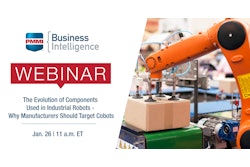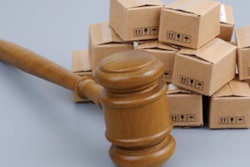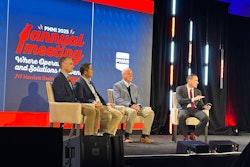In part two of unPACKed with PMMI’s Secrets of Sustainability with Tetra Pak’s Angela Peterson and the Compass Group USA’s Marissa Golison, the focus shifts from on-package messaging to generational buy-ins. As sustainability has grown from buzz word to culture, it is essential to understand and incorporate how Baby Boomers, Gen X, Millenials and Gen Z approach recycling and sustainability to best understand how to ensure messaging is hitting the mark.
To subscribe, rate, review and find more unPACKED podcast episodes, visit pmmi.org/podcast or find us on Apple podcasts, Spotify or iHeart Radio.
 | Read the full transcript below. |
Sean:
In the realm of sustainability, something as simple as being recyclable isn't getting too far into the weeds in the sustainable part of the conversation. Kind of not the low hanging fruit. But recycling has been around for decades. Why now? And I understand that it's clearly a generational thing to some degree and a more awareness of the environment. What was kind of the impetus where now suddenly people are A, more concerned with recycling in general and B, to finally getting... Because I feel like if you go to other countries in Europe where you'll... It is very clearly identified that like, "This is where you're going to throw your glass away and this is where you're going to throw this plastic away." And it is universal versus the way you just described kind of here in the US where I don't know what goes in my recycling that I'm putting on the curb every week. So would you just say that's a generational thing that people have become more aware of it?
Marisa:
So taking this a little bit to a macro level, up until 2019, most Western countries were shipping our recyclables to China, who had the labor and the infrastructure to manage all of the materials that we were using on a day-to-day basis. So basically for the last 20, 30 years, the US and other Western countries had not had to invest in the infrastructure domestically because we had this great system where China would process the materials and then sell the raw materials back to be put into new goods and new packaging. One of the challenges specifically from the US is that we supported and have created the mainstream of single stream recycling. Single stream recycling is where you just put all of your materials, paper, cartons, glass, plastics, all in one bin. And then we rely on material recovery facilities to sort through those and put them in the appropriate streams for them to get recycled.
Marisa:
The challenge is that it leads to a lot of contamination and the materials that we were sending to China weren't as clean as they should have been. And so they weren't getting the returns that they needed. And so the National Sword policy put forward by China, launched in 2017 and finalized in 2019, really was the last straw of what we could send out of the US.
Marisa:
And I think that was really the waking up moment for us in saying, "We use a lot of stuff. We go through a lot of materials and we don't have the infrastructure domestically to be able to handle these." And then I think also compared to Europe, the consumer behavior side of things, if you go to Denmark or Sweden, it's like there's a 10, 20-bin system where you're separating your PET plastics from your HDPEs to your LDPEs and you ask the average consumer in the US and they're like, "Well, plastic is plastic." And that's not necessarily the case. And so I think that all of these macro-level, global-level issues have compounded to create this mound of packaging waste that we have in the US that we've been... Organizations like Tetra Pak and Consumer Brands Association and Compass Group and all of these different organizations are coming together to try to figure out these issues through coalitions.
Marisa:
And PMMI was part of the Recycling Leadership Council, which we hosted through Consumer Brands Association. And it's like, this is not something one organization can solve alone. We need massive coalitions to come to the federal government and say, "We need your support. We need your action to be able to make moves and solve these issues at a systems level versus an individual brand level." Sorry, that was a long answer to that question.
Sean:
No. And it's my fault for pulling the pin on that grenade and kind of throwing it and running away. But I do appreciate the explanation. It's something that just is always confounded me is what kind of flip the switch, where now this has become... Because again, I followed this for years, and now we're getting to the point where it's reaching the consumer level. And it can kind of lead me to my next question where, what are we doing with the packages and what are we doing with the logos and the branding to make the consumer willing to pay? Because more often than not, it's going to be more expensive unless I'm missing something. From what I understand and from everything I'm reading that it's going to be more expensive to buy product A that's in this wonderful, sustainable package that disappear in a year versus good old fashioned something that's been around forever. I don't want to bash any of our packaging materials on a packaging podcast, but something that'll be around for a long time and needs a lot of work to recycle. So how do we reconcile that for the consumer to make them willing to, versus impulse one-time buy, be more aware or deal with the long-term effects that this purchase is going to have.
Marisa:
Right. And so from a industrywide perspective... And when I say industry, it's the entire packaging industry. So it's apparel. It's consumer package goods. It's anything that is sold in a package. So right now in the US and globally, there are different policies being looked at to try to right-size the economics of recycling. Recycling is always going to be more expensive than putting something in a landfill. And so that is the crux of this issue from a longer-term standpoint of like, "How do we get recycled materials to be on the same playing field as virgin materials?" And so there's different policies, recycled content mandates, extended producer responsibility, that help to facilitate that pull through of the materials that end up at a material recovery facility, but aren't necessarily getting recycled because there isn't a marketplace for them. So recycle content mandates basically set a percentage that a brand has to hit in order to sell their products in a given region.
Marisa:
So 35% recycled content mandate, 50% recycled content mandate, whatever it is, creates that pull through so that if you are a recycler, then you have a guaranteed marketplace to sell your products. Extended producer responsibility is a method where policymakers put some form of fee on the producers, typically the brand owners, that would then internalize the cost of recycling and the pollution that comes from packaging waste. And then that is able to pass it through the entire supply chain and cover the cost of recycling. So that's more of the economic side of things of like, how can we create a circular economy for packaging? And a lot of this is figuring out where to put those fee structures. I think the greater challenge which Angela can talk more to is how do we get through those hurdles right now where the cost is going to be higher in the short-term as we get to these longer-term solutions?
Angela:
And I think that is the million-dollar question. If I had a really strong answer for you, I would be incredibly [crosstalk 00:08:23].
Sean:
Yeah, we would not be on this podcast together right now. You would not be doing this with us. You'd be way higher.
Angela:
No. But I think what I encourage brands to do is to share their results, demonstrate to the consumer how they are making improvements in their packaging and what that means, and why it's important that their fan base continues to support them. So I mentioned previously about the Carbon Trust logo. So we have the option for brands to move in from traditional fossil-based fuel plastics to plant-based plastics. And with that, we're encouraging brands to say, "This package now comes with plant-based coatings or caps. This is how it reduces the footprint of this package." So we're able to demonstrate we are making improvements. Your money is going to something that is making a difference today. And so I think if you are able to communicate results on package or update consumers about what's new, it helps them to understand how they play a role in your journey.
Angela:
Obviously that won't change everyone's mind. I think everybody right now realizes things are getting more expensive in general. There's only so many dollars that most families have to spend. But I think it's really about trying to give the consumer kind of some ownership in your success so they kind of share the success with you. They feel like they're on the journey with you. And then continue to update your consumers. Social media is a great place to do that, provide those updates, let them know where you are on the journey.
Sean:
So I just want to ask one more thing to wrap this, put a bow on this for us because I could talk to you all day and would love to have you back again. But we've talked the FTC green guides, and they're coming up on almost 10 years old, and they're going to be up for review in 2022. So with all this that we've talked about, I guess what does the FTC need to include in this next round, these updates that hopefully you're going to answer some of the questions that we've brought up on here? What do they need to put in there to make this easier for the process or the package or the consumer across the sustainable [inaudible 00:11:09]?
Marisa:
So I'll keep it a bit high-level here just for the sake of time, but in updating the FTC green guides, I think the greatest win could come from providing as transparent and consistent ways of measuring and providing ways so that there isn't multiple interpretations of a specific message. I know that we're seeing that right now with recyclability and just... It is extremely challenging distilling down these massively complex calculations into a specific way to message it. If I think about how we calculate carbon emissions, being able to message on that is extremely challenging. And so how can we about the ways that brands can communicate and how simple it needs to be, and then working backwards from there and trying to figure out, okay, given how simple the messaging needs to be, but the legal guidelines behind it needs to be extremely robust in order to get to those super simple messages that brands can put on pack.
Marisa:
The other thing... and I'd be remiss if I didn't mention it on this podcast... is have an eye for the future. Smart packaging, QR codes, digital watermarks. There is a wealth of opportunity in these technologies to be able to provide further information to consumers that we just cannot fit on a package right now, especially as we're trying to limit the amount of packaging that is put in the marketplace. Downsize all packaging, but increase the amount of certifications. Increase the amount of content on pack. And so those are the two major pieces that I would say, and just think about the environmental issues that we're talking about today that weren't discussed in 2012 and make sure that all of those different areas are being included.
Angela:
I agree 100%, Marisa. And I think from a communicator's perspective, working with brands and packaging suppliers, I think anything that can be done to make the claims as easy to understand not just for consumers, but for brands as well, will be incredibly helpful. We work with a lot of brands where even internally, really making sure that they understand their own sustainability claims takes a lot of work to get there. And so if the green guidelines are as clear to understand as possible and each claim is very easy to navigate to determine if it makes sense for you or not, will be very helpful. We see some terms that are a little fuzzy, things like biodegradable. What does that really mean? I think if you ask anyone, they are going to give you a different response.
Angela:
And I think when we look at terms like that, we need to say like, "It has to be biodegradable within this specific timeframe under these conditions." I think we're starting to see more plant-based materials on the market. How does plant-based vary from natural vary from bio-derived? And I think there's still just a lot of gray areas and a lot of sustainability claims. So I think just really setting some very clear parameters on what a lot of these different topics mean will be incredibly helpful. 2022 is a very different world than we had in 2012. So we're seeing a lot more scrutiny. We're seeing a lot of consumers that are able to find a lot of this information on their own, which is leading to additional questions. People really want to be educated and they don't want to have to necessarily find it themselves. They want that clear, transparent, and accurate information served up to them on their package.
Sean:
That is exactly what I needed in a nutshell to kind of wrap this up from both [inaudible 00:15:30] on a high level. And then again, on a more intimate on the actual package level, I just keep thinking maybe we just need to update these guides a little more often because 10 years seems like a long time in this industry. But with that being said, I can't thank you enough, Marisa and Angela, for coming on here and kind of getting into the weeds a bit as well as giving us a high view on some of these sustainable issues that we're facing from the company through the processing through the packaging and all the way down to the package level. So with that, thank you, Marisa, for coming on, and thank you, Angela, for coming on.
Angela:
Thanks for having us.
Marisa:
Thank you.



















